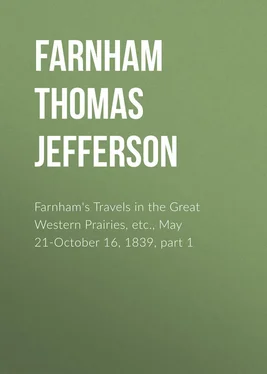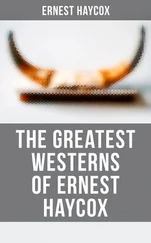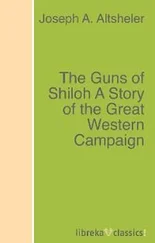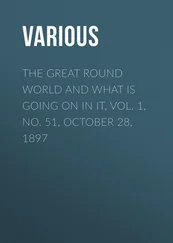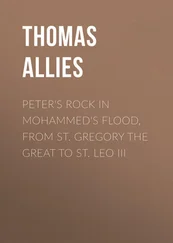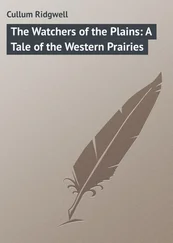Thomas Farnham - Farnham's Travels in the Great Western Prairies, etc., May 21-October 16, 1839, part 1
Здесь есть возможность читать онлайн «Thomas Farnham - Farnham's Travels in the Great Western Prairies, etc., May 21-October 16, 1839, part 1» — ознакомительный отрывок электронной книги совершенно бесплатно, а после прочтения отрывка купить полную версию. В некоторых случаях можно слушать аудио, скачать через торрент в формате fb2 и присутствует краткое содержание. Издательство: Иностранный паблик, Жанр: foreign_antique, foreign_prose, Путешествия и география, на английском языке. Описание произведения, (предисловие) а так же отзывы посетителей доступны на портале библиотеки ЛибКат.
- Название:Farnham's Travels in the Great Western Prairies, etc., May 21-October 16, 1839, part 1
- Автор:
- Издательство:Иностранный паблик
- Жанр:
- Год:неизвестен
- ISBN:нет данных
- Рейтинг книги:3 / 5. Голосов: 1
-
Избранное:Добавить в избранное
- Отзывы:
-
Ваша оценка:
- 60
- 1
- 2
- 3
- 4
- 5
Farnham's Travels in the Great Western Prairies, etc., May 21-October 16, 1839, part 1: краткое содержание, описание и аннотация
Предлагаем к чтению аннотацию, описание, краткое содержание или предисловие (зависит от того, что написал сам автор книги «Farnham's Travels in the Great Western Prairies, etc., May 21-October 16, 1839, part 1»). Если вы не нашли необходимую информацию о книге — напишите в комментариях, мы постараемся отыскать её.
Farnham's Travels in the Great Western Prairies, etc., May 21-October 16, 1839, part 1 — читать онлайн ознакомительный отрывок
Ниже представлен текст книги, разбитый по страницам. Система сохранения места последней прочитанной страницы, позволяет с удобством читать онлайн бесплатно книгу «Farnham's Travels in the Great Western Prairies, etc., May 21-October 16, 1839, part 1», без необходимости каждый раз заново искать на чём Вы остановились. Поставьте закладку, и сможете в любой момент перейти на страницу, на которой закончили чтение.
Интервал:
Закладка:
13
This refers to the voyage of Bruno Heceta in 1775, Juan Perez being second in command. This expedition discovered the mouth of the Columbia and took possession for Spain of the entire North-west Coast from 42° to 55° of north latitude. – Ed.
14
This is a brief but imperfect résumé of what is known as the Nootka Sound controversy. Martinez seized three English vessels, and carried them as a prize to San Bias, Mexico. The English resenting this, war nearly ensued, but the difficulty was adjusted by the Nootka convention, signed October 28, 1790 (not 1800). The Washington State Historical Society has recently signalized this event by erecting a monument at Nootka Sound, containing the following inscription: "Vancouver and Quadra [English and Spanish representatives respectively] met here in August 1792 under the treaty between Spain and Great Britain of October 1790. Erected by the Washington University State Historical Society, August, 1903." The matter was not wholly adjusted until 1795. Consult Bancroft, North-west Coast , i, pp. 204-238; Greenhow, Oregon and California , pp. 185-215, and particularly W. R. Manning, "Nootka Sound Controversy," in American Historical Association Report , 1904, pp. 283-475. – Ed.
15
This date is incorrect. It was in 1577; and he sailed to the 48th parallel of north latitude. – English Editor.
16
Much has been written on Drake's famous voyage of circumnavigation (1577-80), when first of any known Englishmen he explored the North-west Coast of America, searching for a North-west passage. Bancroft concludes ( North-west Coast , p. 145) that he did not go north of 43° north latitude. See also on this subject, Julian S. Corbett, Drake and the Tudor Navy (New York, 1898), i, p. 306; and especially Miller Christy, Silver Map of the World (London, 1904), p. 20, wherein, on the evidence of the chart, Drake's voyage is traced as far north as 48°. For Drake's Bay, see our volume vi, p. 257, note 66. – Ed.
17
It is generally conceded that Sir Thomas Cavendish's freebooting expedition of 1587 did not proceed north of the peninsula of Lower California. – Ed.
18
He was killed on the 14th February, 1779. – English Ed.
19
For Vancouver see Franchère's Narrative , given in our volume vi, p. 184, note 2. – Ed.
20
Farnham here refers to the voyages of the "Columbia" and "Washington" (1787), sent out by Boston merchants under command of Captains John Kendrick and Robert Gray. After wintering at Nootka (1788-89), Gray explored the coast to the northward. Unaware of earlier English explorations, he christened Queen Charlotte's as Washington Island. The question of Kendrick's exploration (1790) of Puget Sound is much in doubt. Farnham makes a specious plea at this point – his cited authority, Greenhow, admits the discovery (1787) of Queen Charlotte's Island by Dixon, and by Berkely (1787) of the Straits of Juan de Fuca. A recent historian of Oregon (H. S. Lyman, History of Oregon , ii, p. 93), however, claims that the Americans by their boldness of exploration and exact charting of the northern shores, were the real discoverers of the territory as far as 54° 40´. – Ed.
21
Referring to the second voyage of Captain Robert Gray. See our volume vi, p. 183, note 1. – Ed.
22
The prior occupancy was the settlement at Astoria, for which see prefaces to Franchère's Narrative , in our volume vi, and Ross's Oregon Settlers in our volume vii. After the close of the War of 1812-15, the United States made application in accordance with the Treaty of Ghent for the restoration of Astoria, which accordingly was formally transferred, October 6, 1818, to Commissioner J. H. Prevost and Captain J. Biddle. No use was made, however, of this sovereignty, the treaty of joint occupancy being signed October 20, of the same year. – Ed.
23
For a sketch of Independence see Gregg's Commerce of the Prairies , in our volume xix, p. 189, note 34. – Ed.
24
When Jason Lee, the Methodist missionary, went east (1838-39) for re-inforcements, he took with him two Indian youths to be educated. Meetings were held in many cities; at Peoria, Illinois, one of the lads being taken ill, was left behind. His presence continued the interest aroused by Lee's representations, so that early in 1839 a company of young men, not one of whom had ever been west of St. Louis, was organized to undertake the Oregon migration. The party consisted at first of nineteen persons. See Robert Shortess, "First Emigrants to Oregon," in Oregon Pioneer Association Transactions , 1896. – Ed.
25
For the Mormons in Missouri consult our volume xx, pp. 93-99, with accompanying notes. – Ed.
26
The governor of Missouri (1836-40) was Lilburn W. Boggs, for whom see our volume xx, p. 98, note 65. – Ed.
27
Consult the references in our volume xxiv, pp. 119, 120, notes 99, 100. – Ed.
28
See a brief sketch of Rigdon in Flagg's Far West , our volume xxvi, p. 358, note 209. – Ed.
29
For the use of this term Indian Territory – which did not at that time correspond with our present Indian Territory – see Wyeth's Oregon in our volume xxi, p. 50, note 31. – Ed.
30
The Santa Fé route was taken in preference to the Oregon trail on the advice of Andrew Sublette and Philip Thompson, who had just returned from the mountains. See Shortess's "Sketch," cited in note 20, above. – Ed.
31
For this stream see James's Long's Expedition , in our volume xiv, p. 184, note 153. – Ed.
32
This is probably the same as Round Grove, for which see Gregg's Commerce of the Prairies , in our volume xix, p. 193, note 35. – Ed.
33
The Osage rises in Kansas south of Kansas River, and as Farnham states, flows in a general easterly course into the Missouri. The usual camping place on the Santa Fé trail was about a hundred miles out, on what was called One Hundred and Ten Mile Creek, indicative of its distance from Fort Osage. – Ed.
34
For the Kansa, see Bradbury's Travels , in our volume v, p. 67, note 37. – Ed.
35
On the Comanche, see our volume xvi, p. 233, note 109. – Ed.
36
See Gregg's description of this place, and the method of forming a caravan, in our volume xix, pp. 196-203, with accompanying notes. – Ed.
37
For the Cottonwood see our volume xix, p. 204, note 42. The crossing was nearly two hundred miles from Independence. – Ed.
38
Turkey Creek, for which see our volume xix, p. 205, note 44. – Ed.
39
Silas Bent of St. Louis (1768-1827), judge of the superior court of the territory and prominent at the bar, had seven sons. The third, John (1803-45), remained in St. Louis, was admitted to the bar, and held the office of district attorney. The others went out upon the frontier. In 1826 William W., Charles, Robert, and George formed a partnership with Ceran St. Vrain and built a picket fort high up on the Arkansas. The following year they removed somewhat farther east, and built an adobe. William W. Bent was the chief founder of the enterprise. A daring Indian fighter, tradition describes his defeat of two hundred savages after a three days' battle. He married a Cheyenne woman, and made his home at Bent's Fort. In 1847-48 he acted as guide for the American army against New Mexico, whence his title of colonel. For one year (1859) he served as Indian agent, and died at his home in Colorado, May 19, 1869. Robert and George both died young, about the year 1841. They were buried near the fort, their remains afterwards being removed to St. Louis. For Charles Bent, who made his home at Taos, see our volume xix, p. 221, note 55. – Ed.
Читать дальшеИнтервал:
Закладка:
Похожие книги на «Farnham's Travels in the Great Western Prairies, etc., May 21-October 16, 1839, part 1»
Представляем Вашему вниманию похожие книги на «Farnham's Travels in the Great Western Prairies, etc., May 21-October 16, 1839, part 1» списком для выбора. Мы отобрали схожую по названию и смыслу литературу в надежде предоставить читателям больше вариантов отыскать новые, интересные, ещё непрочитанные произведения.
Обсуждение, отзывы о книге «Farnham's Travels in the Great Western Prairies, etc., May 21-October 16, 1839, part 1» и просто собственные мнения читателей. Оставьте ваши комментарии, напишите, что Вы думаете о произведении, его смысле или главных героях. Укажите что конкретно понравилось, а что нет, и почему Вы так считаете.
